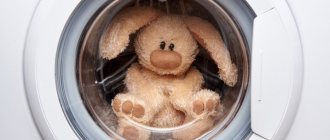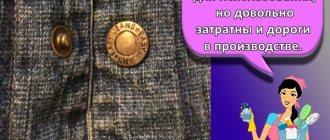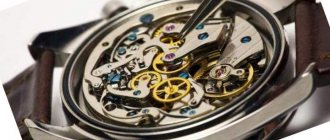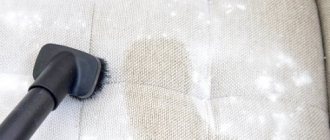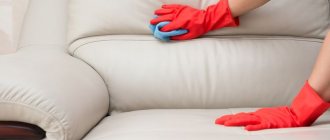Large soft toys are not only children’s friends, but also components of the original interior.
Plush products look very cute, but they collect a lot of dust and are difficult to clean. A separate problem is presented by those that do not fit in the washing machine.
You can even clean large objects manually using homemade recipes, a steam generator and household chemicals.
We'll tell you in this article how to wash a large soft toy at home by hand.
Washing problems
All soft toys accumulate dust and need cleaning. If the manufacturer indicates on the product label that it can be washed in a machine, the problem can be easily solved. But with very large products this will not work.
When choosing a cleaning method, you must take into account that aggressive compounds cannot be used for a number of reasons:
- caustic substances can damage the material;
- they can cause allergies;
- they are undesirable to use in a children's environment;
- not suitable for delicate cleaning.
Time-tested home methods, using household appliances and store-bought cleaning products will help you tidy up a large toy. For any type of cleaning, it is advisable that the first step is vacuuming.
General rules for washing soft toys are discussed here.
Washable: is it possible or not?
Any toys, especially soft ones, are susceptible to the accumulation of dust in large quantities. Therefore, they are an excellent breeding ground for dust mites, microbes and bacteria. Therefore, washing and cleaning of such products should be regular and mandatory.
But the answer to the question whether soft toys can be washed should be indicated on their labels. It also indicates at what temperature the products can be washed. If they are missing, then inspect the item, then it will become clear to you whether the toy can be washed and how.
There are products for which washing is strictly contraindicated.
- Those that have glued parts (eyes and nose, buttons or beaded decorations, etc.).
- Too large specimens. They simply won't fit in an automatic car.
- Musical toys because their interior contains microcircuits and batteries that can deteriorate if they come into contact with water.
- Products whose surface is decorated with natural fabrics.
- Toys with natural organic fillers: sawdust, feathers or buckwheat husks.
If you have come to the conclusion that the toy can be washed, then choose the method in which you will do it: by hand or in an automatic washing machine.
How to do it manually?
Hand washing can consist of several parts:
- careful surface cleaning of the material;
- complete wash of the entire item, including stuffing;
- treatment of particularly contaminated areas and stain removal.
In some cases, brushing just the outer fur of your furry friend is sufficient.
To wash by hand you will need:
- a large container in which the entire thing would fit;
- universal detergent in gel form (if the fur of a soft animal is snow-white, you can use a detergent intended for white clothes);
- sponge;
- laundry soap;
- stain remover if there are particularly dirty places;
- water.
Work order:
Fill the container intended for washing with water at a temperature of up to +30ºС. The exception is for products whose label indicates a higher temperature is permitted by the manufacturer.- Detergent is diluted in water.
- If there are dirty areas on the toy, they are soaped with laundry soap using a sponge. The stains are treated with a stain remover, for example, Vanish.
- Wash the toy with a sponge.
- If the goal is a complete wash, including the filling, then you need to squeeze and unclench the product with your hands so that the filling is also washed.
- It is necessary to rinse the item thoroughly, changing the water frequently.
If the toy cannot be wetted entirely, you can wash only the soiled areas, avoiding deep soaking.
Careful surface washing is especially important in cases where the filler is sensitive to moisture. This applies, for example, to anti-stress filler.
This video will tell you about wet cleaning of a large soft toy:
The severe frost will help us!
- Dissolve the cleaning product in a bowl and clean each toy in turn.
- To avoid completely getting items wet, you can soak a napkin in a soapy solution and wipe each item. After that, dry it.
- If there are greasy marks, they can be removed with an alcohol solution.
- The best option for cleaning is a microfiber cloth.
- After treating with a soap solution, each area is wiped with a clean damp cloth, and then dry to absorb the remaining moisture.
To effectively clean with a vacuum cleaner, use a special attachment for cleaning upholstered furniture.
Removing stains using folk remedies
The uniform dusting of the toy allows you to combine dry cleaning with surface washing. But if there are stains on the item, they need to be treated before washing.
A simple folk method will do:
Moisten the stained area with a sponge.- The soap is foamed and gently applied to the stain.
- Rub the dirty area with a sponge.
- After treatment, the remaining soap is washed off with water.
If a bear, dog or elephant not only decorates the interior, but is also a baby’s favorite, the stains can be removed with a children’s stain remover. After leaving for several minutes, the product is washed off.
To remove stains from children's toys, you should not use chemicals (gasoline, white alcohol, kerosene, etc.) .
Dry cleaning
If the toy is made of materials that cannot be wetted or has glued elements, water cannot be used at all for cleaning.
For dry cleaning you will need:
- a vacuum cleaner with an attachment for cleaning small items;
- soda (the amount depends on the size of the product, but not less than a couple of packs);
- a large plastic bag in which the entire item would fit;
- napkins.
The amount of soda is determined taking into account the fact that the item must be completely sprinkled with it. If there is even more of it, it’s not scary; for cleaning it’s more of a plus than a minus. Instead of soda, you can use potato starch.
Cleaning procedure:
- Thoroughly vacuum the product from all sides.
- Place the toy in a large bag prepared in advance and sprinkle it with soda.
Squeeze out excess air from the bag.- The top of the bag must be tied.
- The bag must be shaken and squeezed vigorously so that the toy comes into contact with the soda on all sides.
- Set the bag aside for an hour. During this time, the soda will absorb all the contaminants.
- Once again actively knead and shake the bag.
- Get a toy.
- Use a napkin slightly moistened with water to go over the dirty places on the material. If necessary, they should be rubbed.
- If there are uncleaned areas, then you need to add soda to them and rub some more.
- Use a dry cloth to shake off the baking soda from the surface.
- Vacuum the product.
The cellophane bag for processing must be chosen to be dense and able to withstand the vigorous impact of the cleaning process.
Steam generator application
If you have a steam cleaner in your home, tidying up a large toy will not be a problem. Steam not only allows you to refresh the material, but also removes dirt, fights mold and other pathogens.
When steaming, avoid contact with surfaces that may become deformed. This group includes natural materials (for example, linen, wool).
If the toy has a built-in electrical device (clock, music generator, etc.), you should not use a steam cleaner. Without damaging the product, this can only be done after removing the electronic unit.
Before using the steam generator, the toy must be vacuumed. This will improve processing efficiency.
Drying rules
Just washing a large toy is not enough. It is very important to dry it properly. It is important to follow these rules:
Ensure good ventilation of the room in which the item will be dried. Or choose to dry it in the fresh air.- It is prohibited to use heating devices or open fire for drying purposes.
- Quite lightweight plush friends made from artificial materials can be hung to dry.
- If there is a possibility that the product may lose its shape, it should be dried on a horizontal surface with a moisture-absorbing terry towel underneath. When they get wet, the towels are changed.
- During the drying process, the product must be shaken and turned over so that the stuffing dries evenly.
After completely drying the toy, it is recommended to comb it to give it a more attractive appearance.
Disinfection methods
Refreshing a toy means not only improving its appearance, but also disinfecting it. The simplest solution is exposure to sunlight in summer and frost in winter .
Low temperatures are harmful to most bacteria and viruses. To combat them, it is quite enough to simply place the toy on the balcony in winter for the whole day.
Additionally, you can treat the fur with a vinegar solution:
- Mix ½ cup vinegar with 1 cup water.
- Pour the solution into a spray bottle.
- Treat the toy from all sides.
- Set it aside to air and dry completely.
What other methods are there?
To clean children's toys, you can use the help of nature. Microbes cannot withstand high or too low temperatures, which will help solve the cleaning problem. This approach has several advantages:
Before the procedure, toys should be vacuumed to remove possible dust and dirt from the surface. Next, the products are simply taken out onto the street or balcony. In winter, this is the easiest way to clean soft toys and do not use water with powder. The colder it is outside, the faster the desired effect will be achieved. It is optimal to leave things in the cold for at least a day. During this time, they will not only be cleaned, but also thoroughly ventilated.
You can also disinfect using sunlight. This method is ideal for summer time. You need to choose a dry and hot day. Vacuum the animals and place them in direct sunlight. You can leave it for several days. The most important thing is not to miss the moment when precipitation begins. Cleaning a soft trinket in this way is very simple and effective. It is important to monitor the material used; some paints may fade when exposed to sunlight and objects will lose their visual appeal.
Recommendations
make washing toys by hand easier :
- All manipulations must be carried out using rubber gloves.
- If there is some kind of electronic unit inserted inside the toy (for music, lighting, etc.), it must be removed before washing.
- Cleaning must be done very carefully, especially around small parts (eyes, nose) and those that are glued rather than sewn.
- Before washing, make sure that all seams are well stitched and small parts on the material are carefully secured.
- Toys that need washing should not be stored together with new and clean ones.
If a toy, even after careful treatment, becomes stained and fades heavily, this indicates its low quality and the use of questionable materials and dyes. There’s definitely no point in regretting something like this.
There is an automatic machine in the machine
You can wash soft toys in the washing machine if approved by the manufacturer.
- Remove musical mechanisms, if any. Sew up the ripped seam well. This will prevent the filler from falling out during washing.
- Place the soft toy in a special bag or a regular pillowcase and tie it tightly. This will help prevent the machine from clogging with filler if suddenly some seam cannot withstand scrolling in the drum. Also, small decorations, glued eyes, ears, nose, if they come off, they will remain in it, and they can then be glued or sewn again.
- Select the “delicate” washing mode and temperature 30˚C.
- Add powder and baby fabric softener to the tray.
- To be absolutely sure that all detergent compounds have been rinsed out, you can use the “extra rinse” function.
- Disable spin. It may deform the toy. The “400-600 rpm” mode is installed if it is approved on the product label.
